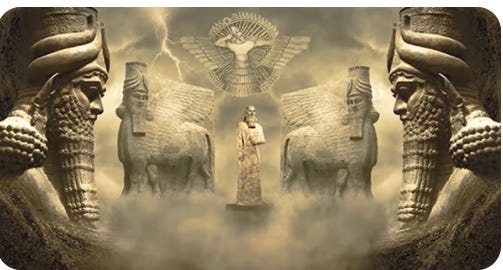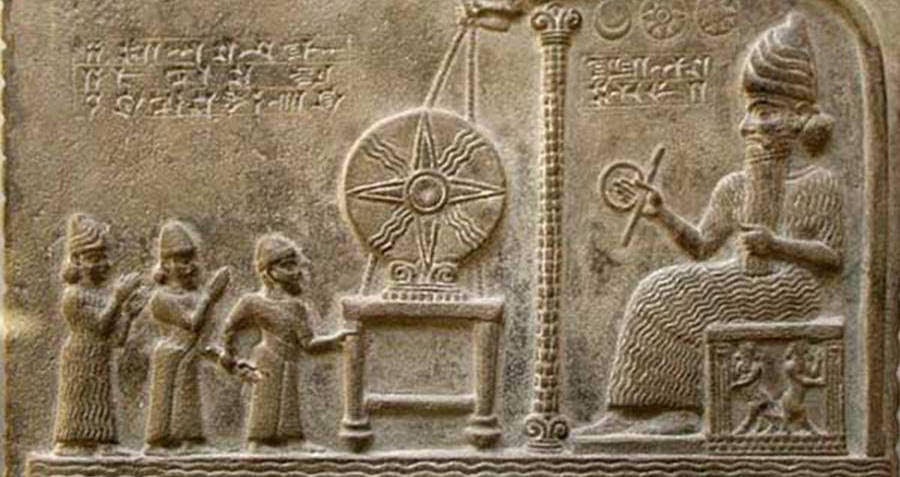Hello!
Today I am going to share today some information about the “Anunnaki”, I am honestly honest in thinking that they were names/images/stories from interactive games or some not real theory. But I was wrong. In many ancient archaeologies (Egypt, Mayans, Incas, etc.) the presence of the Anunnaki has been found in hieroglyphs, drawings and history. I ask you to pay attention and not mock of something that has remained for a long time hide without its truth coming to light. Perhaps many of our unknowns are found here.
*My Website has a Translator!
*¡Mi Sitio Web tiene Traductor!
Anunnaki are deities from ancient Sumerian, Akkadian, Assyrian, and Babylonian civilizations. According to some beliefs, they arrived on Earth around 432,000 years ago by landing in the Persian Gulf. Other theories suggest that the Anunnaki were an advanced extraterrestrial race from the planet Nibiru, who genetically engineered human beings for labor and might return as Nibiru approaches Earth again. The Sumerians considered the Anunnaki to be in charge of human fates and many myths involved their judgment on humans.

The earliest known usages of the term Anunnaki come from inscriptions written during the reign of Gudea (c. 2144–2124 BC) and the Third Dynasty of Ur. In the earliest texts, the term is applied to the most powerful and important deities in the Sumerian pantheon: the descendants of the sky-god An. This group of deities probably included the “seven gods who decree”: An, Enlil, Enki, Ninhursag, Nanna, Utu, and Inanna.
The Anunnaki are chiefly mentioned in literary texts and very little evidence to support the existence of any cult of them has yet been unearthed. This is likely because each member of the Anunnaki had his or her own individual cult, separate from the others. Similarly, no representations of the Anunnaki as a complete group have yet been discovered, although a few depictions of two or three individual members together have been identified. Deities in ancient Mesopotamia were almost exclusively anthropomorphic. They were thought to possess extraordinary powers and were often envisioned as being of tremendous physical size. The deities typically wore melam, an ambiguous substance which “covered them in terrifying splendor”. Melam could also be worn by heroes, kings, giants, and even demons. The effect that seeing a deity’s melam has on a human is described as ni, a word for the physical tingling of the flesh. Deities were almost always depicted wearing horned caps, consisting of up to seven superimposed pairs of ox-horns. They were also sometimes depicted wearing clothes with elaborate decorative gold and silver ornaments sewn into them.
The ancient Mesopotamians believed that their deities lived in Heaven, after an earlier history of visiting earth in the mythological texts, and that a god’s statue was a physical embodiment of the god himself. As such, cult statues were given constant care and attention and a set of priests was assigned to tend to them. These priests would clothe the statues and place feasts before them so they could “eat”. A deity’s temple was believed to be that deity’s literal place of residence. The gods had boats, full-sized barges which were normally stored inside their temples and were used to transport their cult statues along waterways during various religious festivals. The gods also had chariots, which were used for transporting their cult statues by land. Sometimes a deity’s cult statue would be transported to the location of a battle so that the deity could watch the battle unfold. The major deities of the Mesopotamian pantheon, which included the Anunnaki, were believed to participate in the “assembly of the gods”, through which the gods made all of their decisions. This assembly was seen as a divine counterpart to the semi-democratic legislative system that existed during the Third Dynasty of Ur (c. 2112 BC – c. 2004 BC).

Anunnaki Documental:
Anunnaki Documentary:
LINKS:
https://en.wikipedia.org/wiki/Anunnaki/
https://www.ancient-code.com/the-history-of-the-anunnaki-the-14-tablets-of-enki/
https://lorelibrarymyth.com/anunnaki-family-tree-mesopotamian-gods/

amadriadi celia bailes © All Right Reserved.
The Author has registered at Protect My Work.Com
